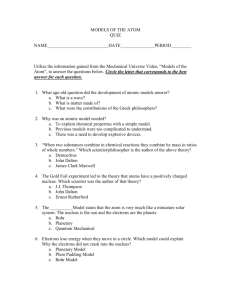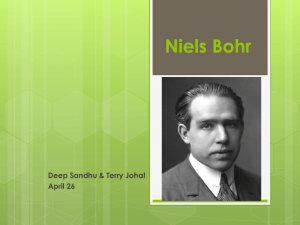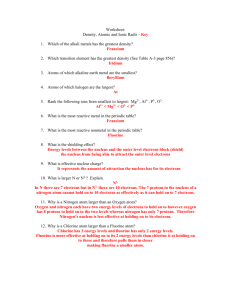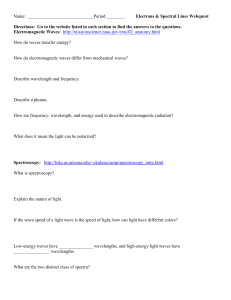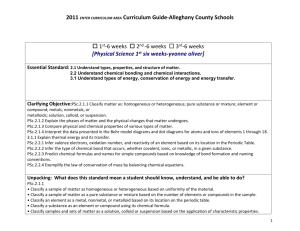File - Mr. Piering`s Science Page
advertisement
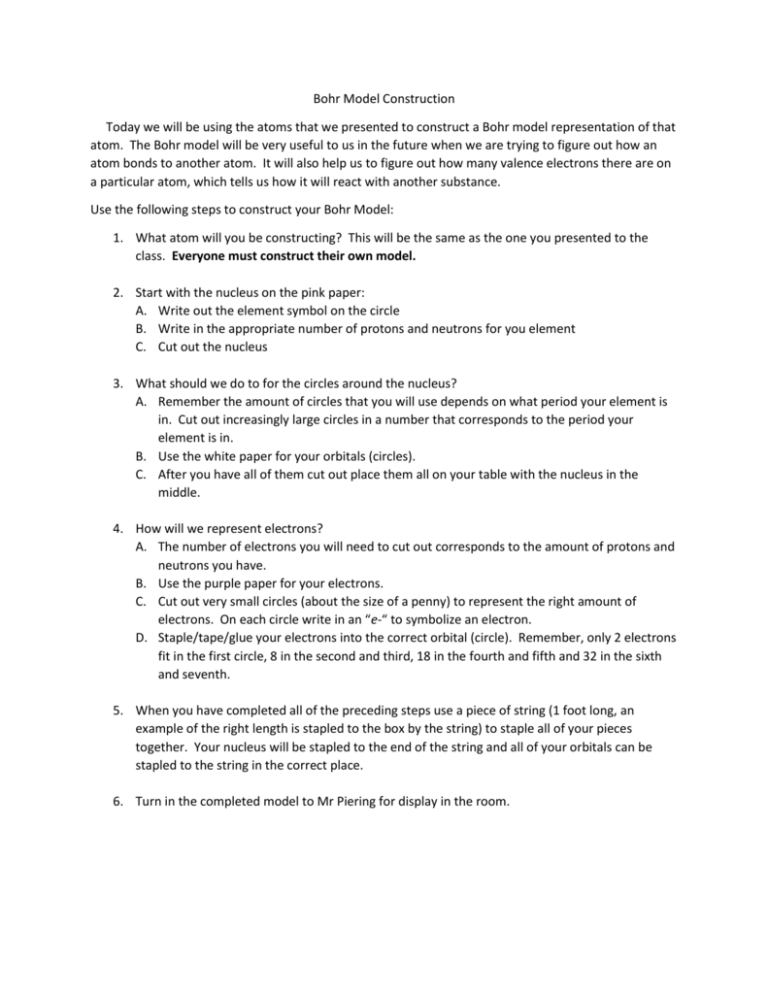
Bohr Model Construction Today we will be using the atoms that we presented to construct a Bohr model representation of that atom. The Bohr model will be very useful to us in the future when we are trying to figure out how an atom bonds to another atom. It will also help us to figure out how many valence electrons there are on a particular atom, which tells us how it will react with another substance. Use the following steps to construct your Bohr Model: 1. What atom will you be constructing? This will be the same as the one you presented to the class. Everyone must construct their own model. 2. Start with the nucleus on the pink paper: A. Write out the element symbol on the circle B. Write in the appropriate number of protons and neutrons for you element C. Cut out the nucleus 3. What should we do to for the circles around the nucleus? A. Remember the amount of circles that you will use depends on what period your element is in. Cut out increasingly large circles in a number that corresponds to the period your element is in. B. Use the white paper for your orbitals (circles). C. After you have all of them cut out place them all on your table with the nucleus in the middle. 4. How will we represent electrons? A. The number of electrons you will need to cut out corresponds to the amount of protons and neutrons you have. B. Use the purple paper for your electrons. C. Cut out very small circles (about the size of a penny) to represent the right amount of electrons. On each circle write in an “e-“ to symbolize an electron. D. Staple/tape/glue your electrons into the correct orbital (circle). Remember, only 2 electrons fit in the first circle, 8 in the second and third, 18 in the fourth and fifth and 32 in the sixth and seventh. 5. When you have completed all of the preceding steps use a piece of string (1 foot long, an example of the right length is stapled to the box by the string) to staple all of your pieces together. Your nucleus will be stapled to the end of the string and all of your orbitals can be stapled to the string in the correct place. 6. Turn in the completed model to Mr Piering for display in the room.



